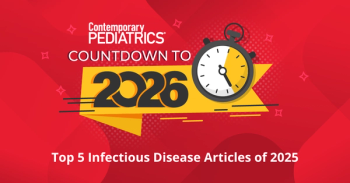
Understanding neurodiversity: What every parent and pediatrician should know when it comes to your child’s brain development
Parents and pediatricians navigate the complexities of neurodiversity, emphasizing the need for open communication and better resources for child development.
For many parents, the idea of neurodiversity can be confusing, overwhelming, and misunderstood. For many pediatricians, the same can be true. With limited opportunities to explore mental wellness in medical school and during residencies, many pediatricians have limited experience when it comes to studying a child’s developing brain.
As the term “neurodiversity” becomes more mainstream outside of the medical community, many people have a misguided definition of the term. Often conflated as another term for autism spectrum disorder, neurodiversity is far broader than that and includes several conditions. Neurodiversity is a term that includes a range of differences in brain activity. This includes autism spectrum disorders, attention-deficit/hyperactivity disorder, and learning disorders.
Lack of resources for pediatricians
The lack of resources for properly understanding the nuances of neurodiversity begins with minimal training about mental health and well-being in medical school. Even as pediatricians continue their training with their internships and residencies, there’s very little focus on mental wellness. Most training includes how to prescribe medication for behavioral health challenges, but there’s no information on pairing medication with therapy and other modalities to meet the needs of these children, despite there being very few cases where medication is the only answer.
The clinician shortage we’re facing today only exacerbates the problem. Many pediatricians have limited time for proper screenings to ensure patients are meeting age-appropriate milestones. In the short time – often 15 minutes or less – that pediatricians have to interact with their patients, there’s rarely time to ensure that proper screenings are completed or that parents’ concerns are discussed beyond the reason for the visit.
For many parents, it can feel overwhelming to know what to discuss with a pediatrician as far as a child’s behavior, speech, mental wellness, or other concerns, so many of which fall under the umbrella of neurodiversity. Because of this, parents may skip asking the question that could help inform them of something important about their child’s brain development. Perhaps the preschool shared an anecdote about a child not listening or being unable to stay still during story time. The parent may dismiss this as not relevant to the pediatrician, so it’s never discussed, though the pediatrician would have likely asked follow-up questions or evaluated the patient to gain more information. As physicians, we must foster open communication so that parents feel comfortable discussing this information with us.
Help parents trust their instincts– and value others’ perspectives
Today, so many parents are overwhelmed by the volume of information about everything from their 3-month-old’s milestones to how many words their 4-year-old should know to how to tell if their child has learning difficulties (or–also under the umbrella of neurodiversity–giftedness). There are books, webinars, parenting influencers, and podcasts–the information is everywhere. But some of the best information can come from trusted sources within our communities, including caretakers, teachers, coaches, and pediatricians.
A common example pediatricians see is information that comes from a teacher, administrator, or coach – anyone who is with a child in a structured setting outside of the home. While it can be very easy to write off testing for conditions that fall under the umbrella of neurodiversity as just that and nothing more, we want to encourage parents to bring it up with their pediatrician. Perhaps there’s nothing more than a developmentally appropriate inability to sit still for an extended time for your 7-year-old. It should still be discussed with a pediatrician.
Teachers and other adults who spend so much time with our children are often the first indication that there could be a brain development issue that warrants a closer examination, or even testing. But the first step is a discussion with your trusted pediatrician. There have been several instances of a parent adding “just one more thing” at the end of a well visit that ultimately led to a better understanding of what the patient needs. When caregivers say, “I think there’s something wrong,” it’s critical that we take the time to listen.
Better infrastructure is needed to fully support parents (and pediatricians)
Because neurodiversity is so complex and nuanced and involves so many different conditions, it’s not all that surprising that most pediatrician (or even primary care) offices are not set up to fully support patients who need additional help. As mentioned above, shorter and shorter office visits, more and more patients each day, and fewer providers across the country all impact this.
We need more time with our patients. For example, let’s look at the American Academy of Pediatrics’ Bright Futures guidelines.1 There are about 50 bullets that pediatricians are expected to get through during a 15-minute well check. And that’s in addition to a physical exam and discussion of any patient (or parent) concerns.
Supporting parents
The signs of neurodiversity in children can emerge as early as toddlerhood and can be easily overlooked or misunderstood. Let’s support our patients and their parents by sharing resources and tips, including:
- Early intervention. You can never intervene too early. Regular check-ups and screenings are the best way to do so. For example, if a 2-year-old doesn’t have his or her 50 to 100 words, it’s better to raise that at their 2-year well visit than six months later, when they risk falling further behind.
- Provider education. This starts with how to talk to parents about what you’re seeing with their child. Even with little formal education or training on brain development and neurodiversity, it’s critical to know how to talk to parents (and patients, depending on their ages) about neurodiversity.
- Again, just because the provider can write a prescription doesn’t mean that drugs alone are the answer. What we know in pediatric and family mental health is that there are better outcomes with medication management when it’s accompanied by therapy.2
- As pediatricians, it’s important that we dispel myths about neurodiversity – what it is and isn’t – so that parents are well-informed about what’s happening with their children. This will also impact how parents speak to their children – and siblings – about neurodiversity, which we know impacts how children talk about it among their friends and peers. Proper language and understanding can help foster inclusivity.
- Parental education. Parents need tools and resources to better help their children succeed.3 This is especially important for neurodiverse families. A central network of anticipatory guidance, trusted content, and support can be found through the American Academy of Pediatrics, as well as Brightline, a leading pediatric behavioral health provider. Important topics to cover include:
- The importance of observation without alarm
- How early support can improve outcomes
- Common myths about neurodiversity
- Resources for parents seeking evaluations or accommodations
- How do you teach your kids about neurodiversity to foster inclusiveness
Pediatricians play an integral role in overall family health care, including the mental health and well-being of children. We are often their first call when something is wrong–whether that’s injury or illness or just an “inkling” or concern. But so many of us aren’t set up to help our patients and their families succeed. Perhaps the biggest and most immediate impact we can have on our families is helping them navigate neurodiversity. That begins with better training of our community on the topic.
References:
- Bright Futures Guidelines and Pocket Guide, American Academy of Pediatrics:
https://www.aap.org/en/practice-management/bright-futures/bright-futures-materials-and-tools/bright-futures-guidelines-and-pocket-guide/?srsltid=AfmBOor57tOQKKYvOGXKjmoQzxu_qB8O08WUiTnB7Mb9vyKDdxokRu8y - Key Components of Effective Pediatric Integrated Mental Health Care Models, JAMA Pediatrics: https://pmc.ncbi.nlm.nih.gov/articles/PMC7483725/
- Brightline tools and resources for parents: https://www.hellobrightline.com/parents/
Newsletter
Access practical, evidence-based guidance to support better care for our youngest patients. Join our email list for the latest clinical updates.




